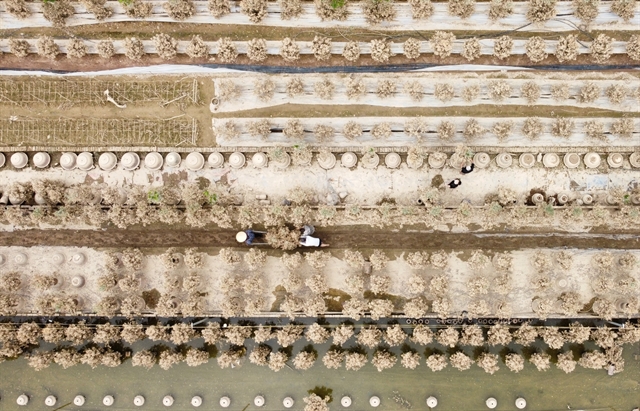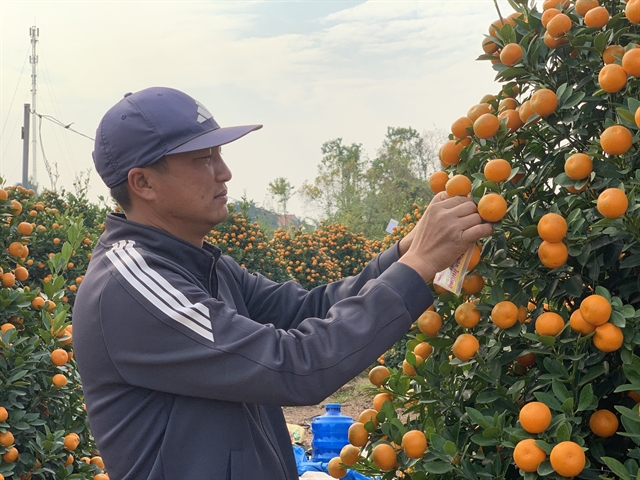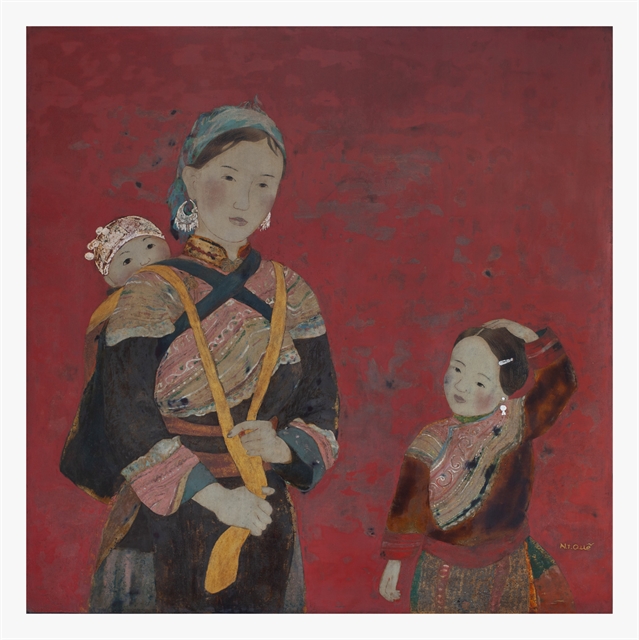 Society
Society

 |
| A kumquat orchard owner in Nam Phong Ward, Nam Định City, in the northern province of Nam Định. —VNA/VNS Photo Nguyễn Lành |
NAM ĐỊNH — With just one week to go until Tết (Lunar New Year), many of the gardens in Nam Phong Ward, the hub of kumquat trees in Nam Định City, the northern province of Nam Định, have sold out or have only a few remaining plants.
High demand and soaring prices have left kumquat growers in good spirits.
While preparing a tree for a customer, Vũ Xuân Trường from Phù Long Residential Area said that it was among the last few kumquat trees left in his garden, ready for delivery.
"This year, kumquat trees are in high demand. Most gardens ran out of stock early, so the farmers are very pleased," he said.
Trường’s family owns an orchard of approximately 2,500 square metres with around 450 kumquat trees.
This Tết, Trường had prepared 200 kumquat trees for customers, but after 70 were ruined by flooding caused by Typhoon Yagi in September, only 130 trees remained.
By late October of the lunar calendar, many customers had already visited his garden to place orders, and by early December of the lunar calendar, Trường had hired extra workers to help dig up the trees for delivery.
Trần Thu Phương, the owner of Phương Lễ Garden, also said that her garden had sold out of kumquat trees.
The family is now busy digging and delivering the last of their stock to customers.
"This year, our trees sold out early, so we’re able to prepare for Tết sooner than usual," she said.
Prices rising
The typhoon caused significant damage to many of the kumquat orchards in the ward.
In addition to the plants being damaged, the remaining trees were weak, making it harder to care for them ahead of Tết.
As a result, the price of kumquat trees this year is approximately 15 per cent higher than last year.
Prices vary based on the size of the tree, but typically start at around VNĐ2 million ($79).
Đỗ Hải Sơn, from Vạn Diệp Residential Area, said that kumquat trees for Tết require specific features, including a beautiful shape, green leaves, evenly distributed fruit as well as flowers and new shoots, especially with fruit ripening just in time for Tết.
Growing a tree that meets these standards requires careful investment and attention, with gardeners applying various techniques for up to one to two years.
Key stages like flowering and fruit-setting are crucial, and if the weather is favourable, the process becomes much easier, he said.
But this year, due to natural disasters, gardeners had to work even harder, using their experience, watering the trees, shaping the branches, applying suitable fertilisers and checking for pests to ensure the trees are ready for Tết.
Phạm Văn Hưng, of the city's Lộc Hạ Ward, is a regular customer of Nam Phong Ward’s kumquat gardens.
He has come every year to buy a kumquat tree for Tết.
This year, he bought a tree priced at VNĐ1.5 million ($60).
Although prices were higher than last year, Hưng believed it was still affordable for most families to buy a beautiful tree within their budget.
Nam Phong Ward’s favourable location along the Đào River, with fertile soil and good irrigation, has enabled the area to successfully transition from less productive crops to growing flowers and ornamental plants, primarily kumquat trees, which offer a higher economic return.
This shift has created jobs and improved the incomes of local residents.
The ward now has around 130ha of land dedicated to flowers and ornamental plants, with nearly 2,000 households involved in the trade.
Of these, around 1,200 households grow kumquat trees.
The income from growing flowers and ornamental plants, particularly kumquat trees, is four to five times higher than that from rice and other crops.
The ward has also implemented a detailed plan to develop areas for growing flowers, kumquat and peach trees to increase the value of production.
The local administration has supported and advised residents on introducing high-yield, economically valuable plant varieties.
It also has invested in irrigation systems and other agricultural services to help the community stabilise and grow their businesses. — VNS




